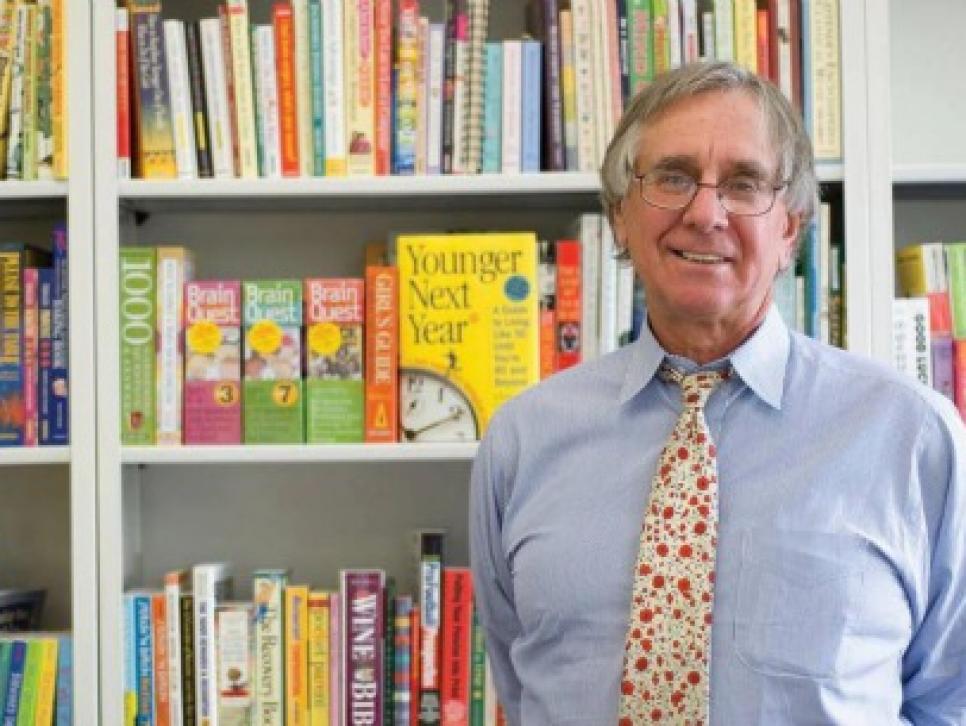News
Remembering a successful publisher and a golf nut
By Bob Carney
That day began with a deluge and wasn't any better a few hours later. My boss was to host us for an afternoon round at a great Connecticut course, but it poured all morning -- at least an inch of achy, cold, steady rain -- and the inevitable call was made: This was a good day to get some work done. Our fourth, another publisher, was totally relieved, but not Peter, I could tell. "Let's talk in a couple of hours," he told me. "Who knows?"

Understand, Peter Workman managed plenty of golf. He traveled to Ireland and Scotland the way the average New Yorker might to the Jersey Shore. He made multiple trips to Bandon Dunes -- Peter's company published Stephen Goodwin's account of the creation of Bandon; he loved the place -- and his phenomenal success allowed him to play just about anytime and anywhere he wanted.
What kind of success? I could give you a list but a couple of examples will do. What to Expect When You're Expecting. That was Peter's. So was Brain Quest, The Official Preppy Handbook, A Thousand Places to See Before You Die, the Kliban Cats book, the Page-a-Day desk calendar (including Golf Digest's), and, also in our world, the charming and beautiful, Where Golf Is Great, by Jim Finegan. Peter was the first to tell you that coffee table books go straight to remainder tables, but he loved Finnegan's ornate storytelling. And Peter loved links golf. So he made that exception and it was a hit. He had, as one writer put it, "an eye for hits." Sometimes, even with some of these, it took a while, but Peter persevered. "Failure is not productive," he said.
About 11 o'clock the phone rang. It was Peter in his familiar, elongated, hesitant, question-mark greeting: "Ahhhhhhhhhhhhh, Bob? It's Peter." It was "looking better," he thought, which, judging by what I saw out my window, was like seeing Elvis in an Eggo. "Sure Peter. I'm up for it if you are." We'd try nine, we agreed, and I went looking for my rain suit.
At the time there seemed no need to squeeze in that round. We just wanted to play. I thought there would be more rounds, lots more rounds, especially with the publishers group Peter played in, but that day it was a matter, as someone at Peter's memorial service put it, "that you wanted to go where Peter was going, you wanted to be with him when you got the chance." It was fun to be around Peter. Fun and challenging. Every meeting, on course or not, was peppered with ideas, weighed, amended, accepted, rejected. Peter was gentle, forceful, demanding. You stayed on your toes.
I won't say that the skies parted for us, but it was a comfortable Irish mist we played through, two zealots on his hilly Connecticut course, with Peter proudly pointing to the changes they'd made, new bunkering, trees removed, more playable all around. We had a match, which Peter won, not unusual. He was the nicest fiercest competitor you'd ever want to meet. I think we played 18 -- heck, you would have in Scotland, right -- and then we had some scotch.
In September last year, Peter was diagnosed with brain cancer. He died in April at 74, leaving his wife of 50-plus years, Carolan, two daughters, and four grandchildren, and dozens of golf companions who loved playing with him because his style of golf was just what a lot of us like the game to be: Unpretentious, with a sense of gratitude for the time and place shared, competitive, entertaining, funny.
Peter's presentation could fool you. He was no clotheshorse. Tall and slightly overweight, he dressed like a college student in cords and a signature red sweater that had tears in the armpits "in reverse proportion to the pretentiousness of the golf club," as a friend of his said at the memorial service. Sometimes his sore back made him stand a bit sideways, adding to the rumpled look.
But the look belied high standards, both for the golf he played and for the books he made. One of his editors said that Peter had once hosted a session in which twenty employees were asked to bring 20 ideas each. Peter listened and reported that none of the 400 quite worked. After a similar session with him in which we offered a dozen golf book ideas, I was happy to learn, a couple of years later, that he had done one of them, and only disappointed that it wasn't with us. Peter saw things -- in writers, covers, photographs, golf courses -- that others couldn't see. A long time editor at Workman Publishing remembered taking a cover to Peter for approval. "It's very smart," he said. The editor had worked with Peter long enough not to assume. "Is that a good thing?" she asked. "No," said Peter. It was a cover, he explained, that looked beautiful but didn't invite the reader in. Pass.
Over time I learned of Peter's other worlds: He was an avid skier, a great lover of and supporter of music, an important philanthropist, an adored father and grandfather. But to me he was a golf friend, one you looked forward to being with, even in a downpour, one who caused you to think more of your sport because he was in it.
Follow @bcarney68

